Traditional Vietnamese cake makers in Da Nang hustle ahead of Tet
In these days leading to the Lunar New Year (Tet) festival, many facilities making ‘banh chung’ (square glutinous rice cakes) and ‘banh tet’ (cylindrical glutinous rice cake) across Da Nang are hastily producing the festive delicacy for upcoming much-waited occasion.
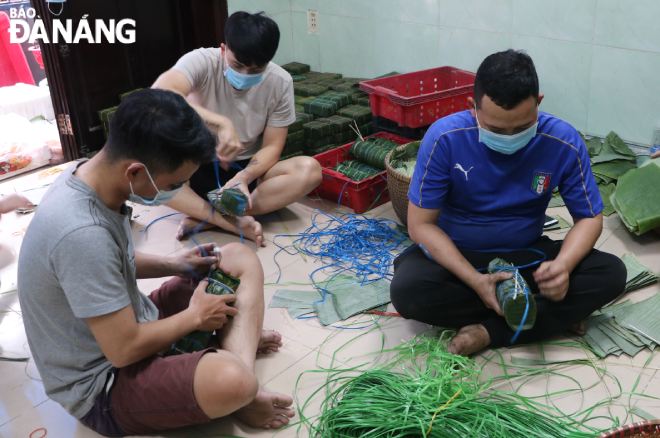 |
| Since the 25th day of the 12th lunar month, a facility owned by Mr Ho Van Khoe at K158A / 14 Tran Cao Van, Thanh Khe District has been busy making ‘banh chung’ and ‘banh tet’ for Tet sales |
This is the 45th year that ‘banh chung’ and ‘banh tet’ making facility owned by Mr Ho Van Khoe at K158A / 14 Tran Cao Van, Thanh Khe District has made time-honoured traditional delicacies for Tet sales.
Till date, his facility has received about 300 – 400 orders, equivalent to a combined total of more than 3,000 ‘banh chung’ and ‘banh tet’.
Since the 25th day of the 12th lunar month, this facility has been busy making ‘banh chung’.
This facility has employed experienced labourers, mainly from the well-known An Tuyen village in Thua Thien Hue Province which has the time-honoured tradition of making these type of traditional Vietnamese cakes.
‘La dong’ (dong leaves) or ‘la chuoi’ (banana leaves), sticky rice, mung beans and pork are all well prepared to make these Traditional Vietnamese glutinous rice cakes. Making the cakes is a time-consuming process.
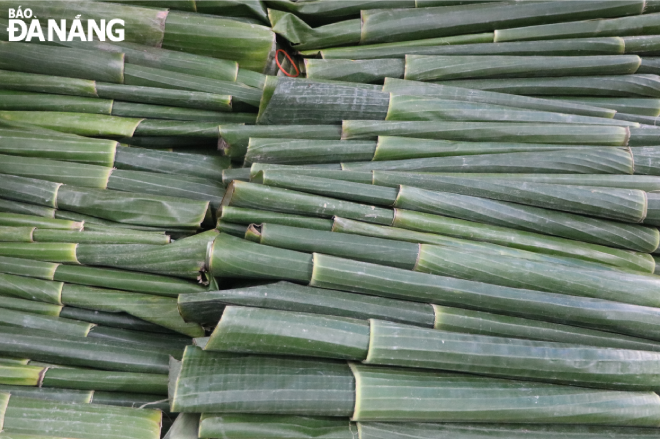 |
| ‘La chuoi’ (banana leaves) are washed in preparation for making ‘ banh chung’ |
 |
| Rice used to make ‘banh chung’ is usually delicious sticky rice that is thoroughly crushed and soaked |
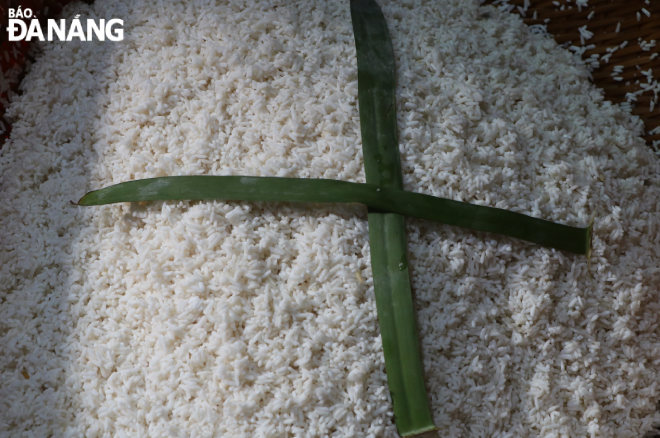 |
| Soaked the sticky rice overnight, then drain and shake with salt. |
‘Banh chung’ is a traditional Vietnamese rice cake which is made from glutinous rice, mung beans, pork and other ingredients.
First, soak crushed mung beans in water for 2-4 hours, wash away the husks, cook, grind them. Take about a cup of the mashed mung beans, spread out on a saran wrap, add a few pieces of pork lean and fat and wrap it up shaping into a round or square piece.
To assemble, lay out two sheets of partially overlapping banana leaves, Place about a cup of rice in the center of the leaves. Place the filling on top of the rice. Then cover it up with another cup rice. Fold the leaves and wrap it tightly like a present. Normally, ‘banh chung’ is wrapped up in frames to make square shape cakes.
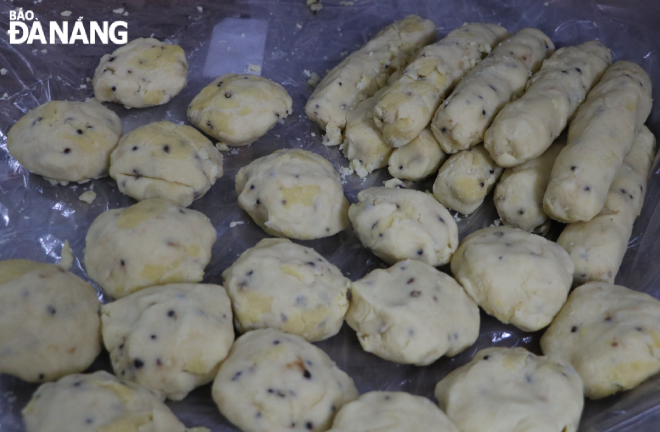 |
| Take about a cup of the mashed mung beans, spread out on a saran wrap, add a few pieces of pork lean and fat and wrap it up shaping into a round or square piece. |
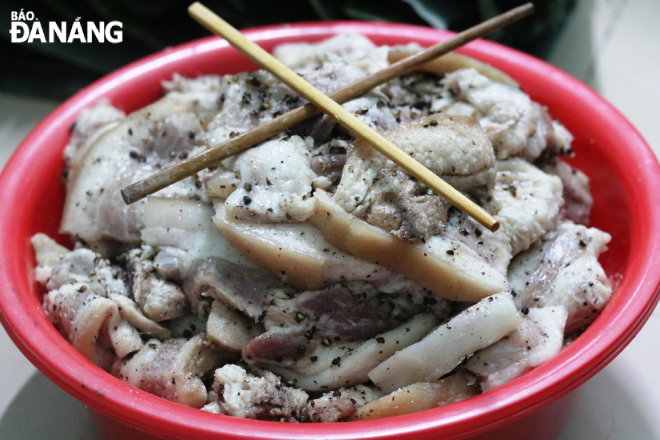 |
| Cut the pork into squares and season them with salt, pepper, and minced onion. |
It is very important that the contents don't shift or spill during cooking. If the boiling water penetrates into the cake, it will make the cake soggy. So it is a great help to wrap it one more time.
For the first layer, make sure the darker side of banana leaf faces the rice so that it can tint the cake with a nice subtle green color later. However, for last layer, the darker side of banana leaf should face outside to give it a beautiful green package.
Meanwhile, ‘banh tet’ is a Vietnamese savoury but sometimes sweetened cake made primarily from glutinous rice, which is rolled in a banana leaf into a thick, log-like cylindrical shape, with a mung bean or mung bean and pork filling, then boiled. After cooking, the banana leaf is removed and the cake is sliced into wheel-shaped servings.
The wrapping of ‘banh tet’ is somewhat more complicated than that of ‘banh chung’.
To assemble, laying out six sheets of partially overlapping banana leaves so that the spinal veins of the leaves are parallel.
 |
| Vegetarian cakes are usually made of sticky rice, peanuts or green beans. |
 |
| ‘Banh tet’ costs 70,000 VND and more for apiece, depending on size and ingredients. |
The darker side of the uppermost sheets faces up. Place about a cup of rice along the length of the leaves. Place the filling on top of the rice. Then cover it up with another cup rice. The cake is tied with more strings to make sure the banana leaves will not fall apart.
According to local experienced cake makers, ‘banh chung’ is placed over ‘banh tet’ in the large-sized cooking pot. After being boiled up for about 12 -13 hours, the cakes are dipped into cold water and quickly taken out so that they will dry more quickly.
At Khoe’s cake making facility, ‘banh chung’ is priced at 40,000 VND to 70,000 VND each, whilst ‘banh tet’ costs 70,000 VND and more for apiece, depending on size and ingredients.
In particular, there are vegetarian and non-vegetarian ‘banh tet’. The vegetarian cake has the same ingredients as ‘banh chung’, whilst the vegetarian one features sticky rice, peanuts or green beans.
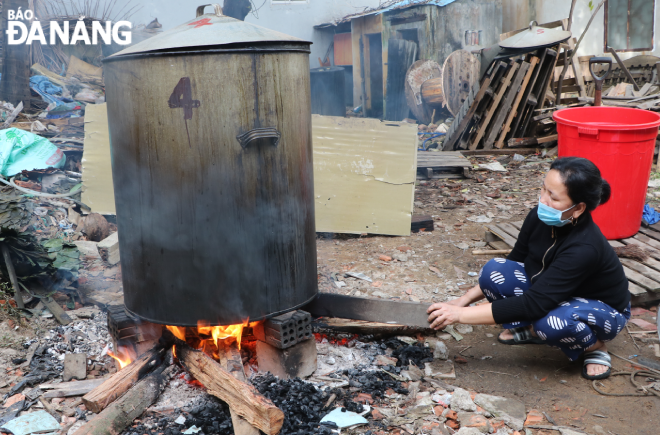 |
| According to local experienced cake makers, ‘banh chung’ is placed over ‘banh tet’ in the large-sized cooking pot. After being boiled up for about 12 -13 hours, the cakes are dipped into cold water and quickly taken out so that they will dry more quickly. |
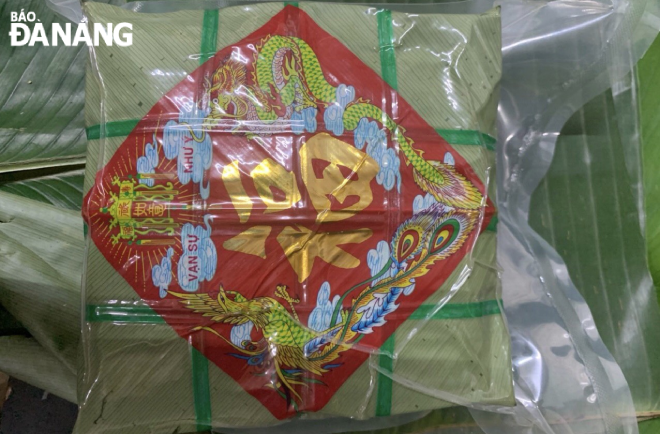 |
| To preserve the cake for a long time, many makers focus on vacuum sealing the cakes before delivering them to the market. |
Like Khoe’s, cake making facilities on Hoang Hoa Tham Street are alsoracing against time to complete orders of ‘ banh chung’ and ‘banh tet’. Amongst them, the Ba Lau facility, owned by Ms. Doan Thi Chin at K91 / 21 Hoang Hoa Tham is the largest.
This facility has 20 employees in charge of making a total of 2,000 ‘banh chung’ and ‘banh tet’ for Tet sales each day. Till date, this venue has recorded an order volume of up to 15,000 cakes.
By VAN HOANG, MAI QUE- Translated by A.T